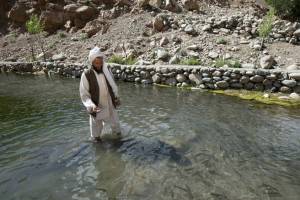Three of Pakistan’s major rivers are seriously contaminated with potentially toxic elements (PTE) from raw sewage and untreated industrial effluents, posing a risk to communities as well as to flora and fauna, says a new study.
The joint Pakistan-China study, published this month in Chemosphere, is based on spectroscopy (an approach used by Chemists to detect very small amounts of an element) of water, sediment and fish samples collected from sites along the Chenab, Indus and Kabul rivers and analysed at the Institute of Tibetan Plateau Research (ITPR), Beijing.
“We found the samples contaminated beyond safe limits with arsenic, lead, cadmium, chromium, nickel, copper, cobalt, manganese and zinc,” says Javed Nawab, lead author of the study and assistant professor at the environmental sciences department, Abdul Wali Khan University Mardan.
Nawab tells SciDev.Net that the concentration of PTEs was found highest in sediment samples from the Chenab, a 1,240-kilometre-long river that originates in India’s Himachal Pradesh state and has industrial and residential settlements located close to its banks.
“Toxic fish captured from the contaminated waters of the three rivers enters the country’s food chain as it is consumed by the people, particularly fisher communities,” says Wang Xiaoping, associate professor at the ITPR.
She tells SciDev.Net that the ecological risk and hazard assessment provides key information on PTE contamination in Pakistan’s major rivers. It also generates data on the spread of contaminants to inland and marine ecosystems and to the biodiversity of the Arabian Sea, into which the metal and other pollutants are finally disgorged.
The researchers found atmospheric deposits, industrial effluents, and municipal and agricultural runoff as key sources of toxicity in the rivers.
“For want of wastewater and organic pollutant treatment facilities, large amounts of PTEs flow into the rivers that cater to the country’s irrigation, industrial and drinking water needs,” says Nawab. “Only eight per cent of the country’s total municipal wastewater and one per cent of the industrial wastewaters are treated before they are discharged into the rivers.”


